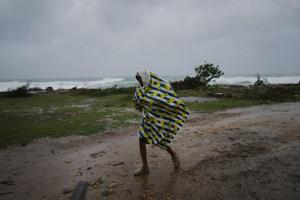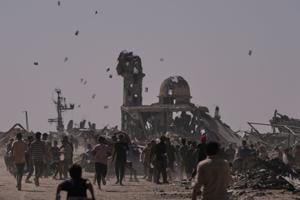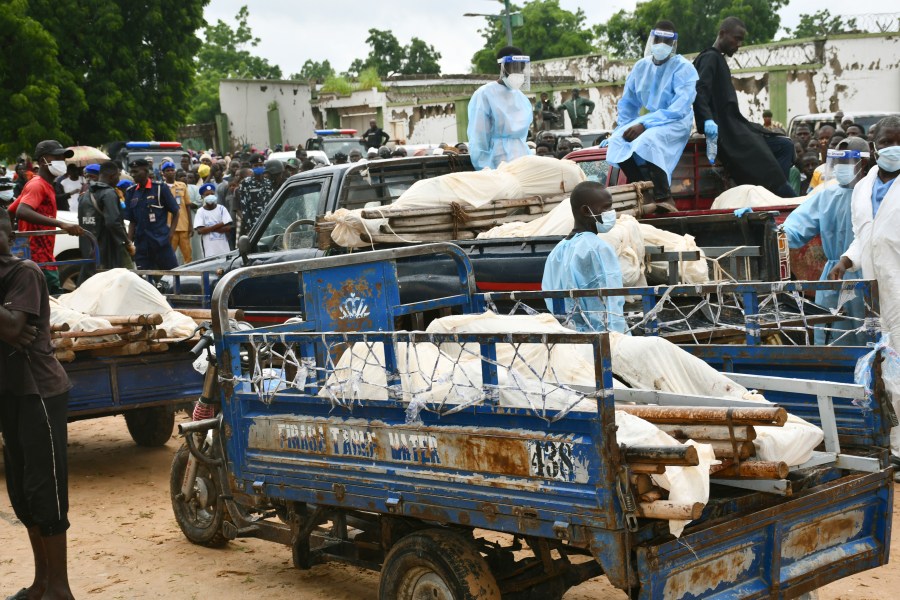Hurricane Melissa has wreaked havoc across the Caribbean, leaving dozens dead and extensive destruction in its wake. The storm made landfall on September 26, 2023, as a catastrophic Category 5 hurricane, battering Jamaica before moving on to Cuba and Haiti. In the aftermath, residents faced a grim reality marked by roofless homes, fallen utility poles, and waterlogged furniture.
The storm struck Jamaica first, with winds reaching up to 185 mph (295 kph). In Santa Cruz, St. Elizabeth parish, a landslide blocked main roads, transforming streets into mud pits. Local resident Jennifer Small expressed her disbelief, stating, “I never see anything like this before in all my years living here.”
In Haiti, flooding caused by the storm resulted in at least 25 fatalities in the coastal town of Petit-Goâve. Mayor Jean Bertrand Subrème reported that numerous homes collapsed when the La Digue River overflowed. Tragically, residents remained trapped under debris, with limited assistance available as only one official from Haiti’s Civil Protection Agency was present in the area.
Cuba also experienced significant destruction, particularly in the southwestern and northwestern regions. By Wednesday, approximately 735,000 people were sheltering in eastern Cuba. Santiago de Cuba resident Reinaldo Charon described the night as “hell,” as he ventured out covered by a plastic sheet, trying to navigate the hazardous conditions.
In Jamaica, the storm displaced over 25,000 individuals, forcing them into shelters. Education Minister Dana Morris Dixon reported that 77% of the island was without power. Complications arose in assessing damage due to widespread outages, with Richard Thompson, acting director general of Jamaica’s Office of Disaster Preparedness and Emergency Management, noting a “total communication blackout” in affected areas.
The storm claimed at least one life in Jamaica when a fallen tree struck a baby. Prime Minister Andrew Holness announced plans to survey the most affected regions to better understand the extent of the damage. Local residents like Annette Lowe and David Muschette shared their harrowing experiences, with Lowe stating, “My entire house top is gone,” while Muschette lamented the loss of everything he owned.
The Jamaican government aims to reopen airports by Thursday to facilitate swift distribution of emergency supplies. To aid recovery efforts, the United States announced the deployment of rescue and response teams to the Caribbean, as confirmed by Secretary of State Marco Rubio.
In Cuba, the situation is dire. Granma province, particularly the municipal capital of Jiguaní, has been severely impacted, with more than 15 inches (40 centimeters) of rain reported. Cuban President Miguel Díaz-Canel warned that the storm could exacerbate the country’s ongoing economic crisis marked by power shortages and food scarcity. He emphasized the need to recognize the storm’s destructive power, calling it “the strongest ever to hit national territory.”
As of Wednesday afternoon, Hurricane Melissa had weakened to a tropical storm with sustained winds of 100 mph (155 kph) and was moving northeast at 14 mph (22 kph), situated about 150 miles (245 kilometers) south of the central Bahamas. Michael Brennan, director of the U.S. National Hurricane Center, indicated that the storm was expanding, with tropical storm force winds now extending nearly 200 miles (322 kilometers) from its center.
Forecasts warned of continued risks, including a storm surge of up to 12 feet (3.6 meters) and additional rainfall of up to 20 inches (51 centimeters) in parts of eastern Cuba. U.S. forecasters suggested that intense rains could lead to life-threatening flooding and numerous landslides.
The devastation caused by Hurricane Melissa underscores the urgent need for recovery and support in the affected Caribbean nations as they begin to assess the full impact of this catastrophic event.







